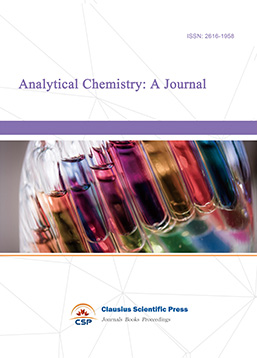Research on Biodegradable Films and Their Comparison with Ordinary Films
DOI: 10.23977/jmpd.2017.11002 | Downloads: 63 | Views: 8314
Author(s)
Lin Derong 1, Wu Jingjing 1, Li Chunxiao 1, Wang Houwei 1, Yang Yuqiu 1
Affiliation(s)
1 College of Food Science, Sichuan Agricultural University, Ya'an 625014, China
Corresponding Author
Lin DerongABSTRACT
As a new type of film, degradable film is now widely used and can be used to package a variety of fruits, vegetables, etc., the purpose of which is to achieve better preservation and delay the storage period. With the development of modern biology, more and more people pay attention to degradable film. Degradable film not only has the function and characteristics of traditional plastic, but also it will revert to reductive form Ecological environment and return to nature in the life of life through the soil and water microbial action or by the role of sunlight in the ultraviolet light, in the natural environment, spliting degradation, so that it will not cause pollution to the environment. New-type fresh-keeping film of fruits and vegetables achieves the purpose of protecting the environment by using film made of degradable materials such as titanium dioxide, starch, soybean protein, chitosan and cellulose. However, now on the market many films do not have good preservation effect and can also destroy the flavor of the food. So this paper conducts a clear exposition of the development and preservation of biodegradable.
KEYWORDS
Biodegradable film, Preservation, Package, Environmental protection.CITE THIS PAPER
Yuqiu, Y. , Jingjing, W. , Chunxiao, L. , Houwei, W. and Derong, L. Research on Biodegradable Films and Their Comparison with Ordinary Films. Journal of Materials, Processing and Design (2017) 1: 10-13.
REFERENCES
[1] Kolybaba M,Tabil L G,Panigrahil S,et al. Biodegradable Polymers: Past, Present, and Future.In 2003 American Society of Agricultural Engineers annual Meeting, Fargo, North Dakata, USA, 2003.
[2] Xu Z H. Research and Development of Biodegradable Plastics in Japan [J]. Modern Chemical Industry, 1992, (05): 40-43
[3] Cui B Y,Zhang Z F,Kong Q. Application of Natural Biodegradable Materials in Agriculture [J]. Chinese agricultural science bullertin, 2013, (24): 5-10.
[4] Liang M,Wang Y,Song S X,et al. Application of Biodegradable Polymeric Materials in Food Packaging [J]. Plastics Industry, 2015, (10): 1-5 +18.
[5] Thomas, Noreen L,et al. Oxo-degradable plastics: degradation, environmental impact and recycling. Proceedings of the Institution of Civil Engineers: Waste and Resource Management; London165.3 (Aug 2012): 133-140.
[6] Su X. UK and Israel to develop new catalysts for PLA biodegradable plastics [N].China Packaging News, 2010-11-30 (002).
[7] Research and Application of Biodegradable Plastics in China [J]. New Materials for Chemical Engineering, 1995, (07): 35-44.
[8] Nampoothiri K M,Nair N R,John R P. An overview of the recent developments in polylactide(PLA) research [J]. Bioresource Technology, 2010, 101(22):8493-8501.
[9] Leja K, Lewandowice G. Polymer Biodegradation and Biodegradable Polymers-Review[J].Polish Journal of Environmental Studies, 2010, 19(2): 255-266.
[10] Kasirajan S,Ngouajio M. Polyethylene and biodegradable mulches for agricultural applications: a review [J]. Agronomy for Sustainable Development, 2012,32(2):501-529.
[11] Zheng Y, Yanful E K, Basai A S. A review of plastic waste biodegradation[J]. Critical Reviews in Biotechnology,2005,25(4): 243-250.
[12] Ammala A,Bateman S,Dean K,et al. An overview of degradable and biodegradable polyolefins[J]. Progress in Polymer Science,2011,36(8): 1015-1049.
[13] Shimao M. Biodegradation of plastics[J]. Current Opinion in Biotechnology,2001,12(3): 242-247.
[14] MastromatteO M,Mastromatteo M,Coonye A,et al. Advances in controlled release devices for food packaging applications[J]. Trends in Food Science & Technology,2010,21(12): 591-598.
[15] Zhao S H. PCL / Preparation and Properties of PPC blend wrap film [D]. Hohhot:Inner Mongolia Agricultural University,2013,6: 2-2.
[16] Yan Q Q. Preparation and Properties of oxidized esterified starch-based antimicrobial food packaging film studies [D]. Taian: Shandong Agricultural University, 2012.
[17] Shang J,Chai M,Zhu Y F. Solid-phase photocatalytic degradation of polystyrene plastic with TiO2 as photocatalyst[J]. Journal of Solid State Chemistry, 2003,174(1): 104-110.
[18] Zan L,Fa W,Wang S. Novel photo degradable low-density polyethylene-TiO2 nanocomposite film[J]. Environmental Science & Technology, 2006, 40(5): 1681-1685.
[19] Fa W J,Gong C Q,Tian L H,et al. Enhancement of photocatalytic degradation of poly(vinylchloride) with perchlorinated iron(2) phthalocyanine modified nano-TiO2 [J].Journal of Applied Polymer Science,2011, 122(1):1823-1828.
[20] Li S Y,Xu S H,He L J,et al. Photocatalytic degradation of polyethyrlene plastic with polypyrrole/TiO2 nanocomposite as photocatalyst[J]. Polymer-Plastics Technology and Engineering, 2010, 49(4): 400-406.
| Downloads: | 4087 |
|---|---|
| Visits: | 253280 |
Sponsors, Associates, and Links
-
Forging and Forming

-
Composites and Nano Engineering

-
Metallic foams

-
Smart Structures, Materials and Systems

-
Chemistry and Physics of Polymers

-
Analytical Chemistry: A Journal

-
Modern Physical Chemistry Research

-
Inorganic Chemistry: A Journal

-
Organic Chemistry: A Journal

-
Progress in Materials Chemistry and Physics

-
Transactions on Industrial Catalysis

-
Fuels and Combustion

-
Casting, Welding and Solidification

-
Journal of Membrane Technology

-
Journal of Heat Treatment and Surface Engineering

-
Trends in Biochemical Engineering

-
Ceramic and Glass Technology

-
Transactions on Metals and Alloys

-
High Performance Structures and Materials

-
Rheology Letters

-
Plasticity Frontiers

-
Corrosion and Wear of Materials

-
Fluids, Heat and Mass Transfer

-
International Journal of Geochemistry

-
Diamond and Carbon Materials

-
Advances in Magnetism and Magnetic Materials

-
Advances in Fuel Cell

-
Journal of Biomaterials and Biomechanics


 Download as PDF
Download as PDF